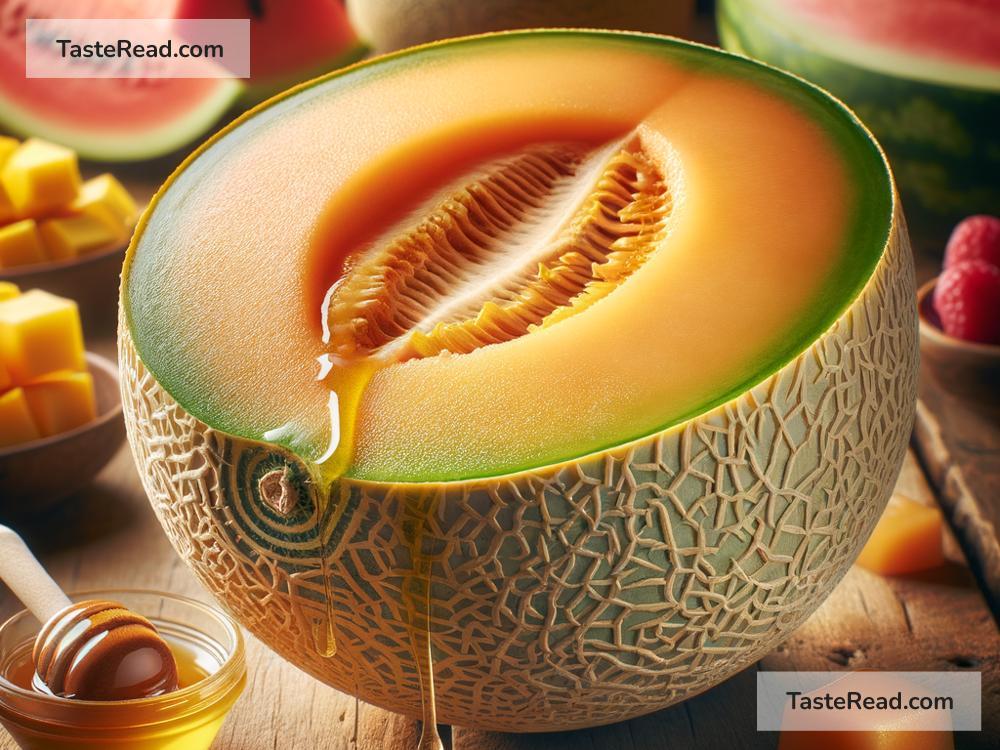The Science Behind the Sweetness of Melons
When you bite into a perfectly ripe melon, its sweetness can feel like a little piece of summer. But have you ever wondered why melons taste so sweet? What makes them sugary and delicious? The answer lies in science! The way a melon grows, ripens, and stores sugar is influenced by complex processes in nature. In this blog, we’ll break down the science behind the sweetness of melons in easy-to-understand terms.
What Makes Melons Sweet?
The sweetness of melons comes from natural sugars formed inside the fruit as it grows and ripens. These sugars include fructose, glucose, and sucrose, which are the same types of sugars found in other fruits like apples, bananas, and berries. Sucrose is the sugar we commonly know as table sugar, while fructose and glucose are natural sugars that give melons their distinct flavor.
The plants that produce melons use the sun, soil, and water to create these sugars. This process relies on photosynthesis, which is how plants convert sunlight into energy. The melon plant uses this energy to grow leaves, stems, and fruits—and to create sugar in the fruit.
How Do Melons Develop Sweetness?
Melons don’t just become sweet overnight! Their sweetness is a result of their growth and ripening process. Here’s how the journey works:
-
Sugar Production:
As the melon plant grows, it absorbs sunlight, water, and nutrients from the soil. Through photosynthesis, it produces sugars that travel to different parts of the plant, including the fruit. These sugars begin accumulating inside the melon as it develops on the vine. -
Ripening:
A melon’s sweetness dramatically increases as it ripens. During this period, the melon converts more complex carbohydrates (like starch) into simpler sugars (like glucose and fructose). This chemical transformation happens inside the fruit and is what makes the melon sweet and juicy just before you eat it. -
Water Content:
Melons are made up of about 90% water, which can dilute their sugary taste if it overwhelms the sugar content. However, when the balance between water and sugar is just right, the sweetness really packs a punch! -
Variety Matters:
Not all melons are equally sweet! The type of melon—whether it’s honeydew, cantaloupe, or watermelon—has its own unique sugar content and flavor profile. For example, cantaloupes are often sweeter than watermelons because they have higher levels of sugar per bite.
The Role of Genetics
Melon sweetness is also determined by genetics. Each melon variety has a specific set of genes that affect how much sugar the fruit produces and stores. Farmers and scientists have learned how to grow melon plants to emphasize sweetness. Through careful breeding, they select melon varieties with naturally higher sugar levels and desirable flavors.
For example, seedless watermelons are bred for sweetness because their genetic makeup strikes a balance between sugar, water, and texture. Science has allowed farmers to improve the sweetness of melons by choosing the best varieties for both taste and growing conditions.
The Importance of Ripeness
One of the most important factors in melon sweetness is ripeness. Eating a melon too early means you’ll miss out on its full sugars. At peak ripeness, the melon has stored the maximum amount of sugar, giving it the sweetest and most flavorful taste.
Here are some signs to tell if a melon is ripe:
- Appearance: Look for vibrant colors. For watermelons, yellow spots where the melon touched the ground can indicate ripeness.
- Smell: Ripe melons, particularly cantaloupes and honeydews, often give off a sweet, fruity aroma.
- Feel: Press gently on the skin. A ripe melon may feel slightly soft but not squishy.
Farmers pay close attention to the timing of harvest to make sure melons reach their peak sweetness when they’re picked.
Environmental Factors
Apart from genetics and ripeness, the environment also plays a role in determining sweetness. Sunshine, soil quality, and climate affect how much sugar a melon can produce. Warm, sunny days are great for photosynthesis, which helps the melon store sugars. Melons grown in ideal conditions often taste sweeter than those grown in less favorable environments.
How Handling Affects Sweetness
Believe it or not, how a melon is stored and handled can also influence its sweetness. Once harvested, melons don’t continue producing sugar, but they can continue softening and changing flavors slightly as they sit. It’s best to eat melons shortly after they ripen to enjoy their maximum sweetness. Refrigerating a melon can slow down these changes and keep it fresher for longer.
Fun Science Fact
Did you know that the sweetness of fruit is measured using a tool called a refractometer? This device measures Brix, which is the amount of sugar dissolved in a liquid. The higher the Brix level, the sweeter the fruit! Farmers often use Brix levels to decide when to harvest melons.
Conclusion
The sweetness of melons isn’t just luck—it’s science! From photosynthesis to ripening, environmental conditions to genetics, many factors contribute to the sugary delight we experience when eating a juicy slice of melon. So the next time you enjoy a cantaloupe, honeydew, or watermelon, remember the amazing processes that brought its sweetness to life. Science, nature, and human care all work together to create this summer treat—and that’s pretty sweet indeed!


